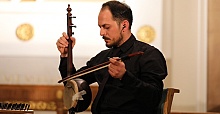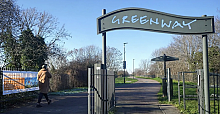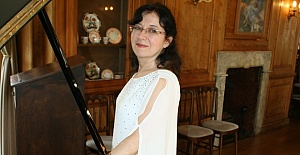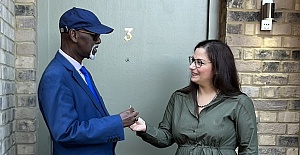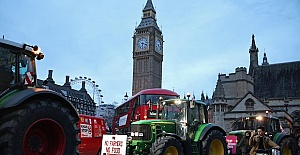To the River: A Journey Beneath the Surface by Olivia Laing
“I am haunted by water,” Laing proclaims. She doesn’t seem to be at ease unless she is near water; she has to be able to hear it at least. To the River is Laing’s journey along the river Ouse, a place that she has been drawn to as though it had been charged with a magnetic power, one which she finds unable to refuse. In Laing’s first book, the reader is taken through the history of this river which is famously known as the waters that Virginia Woolf drowned herself in, but now through Laing’s poetic language, a deeper and more fearsome history is revealed.
Laing, on foot armed with oat cakes, apples, cheese and a knife, travels through plains often flooded by this river running through Sussex, she looks outward to where a village would have been had it not been swallowed whole and taken back by the river. Along with haunted aspects of villages gone and battles played out beside it, it is the ghost of Virginia Woolf which swims throughout. Woolf’s ghost appears to travel alongside Laing on her journey; her presence resides within the printed page for Woolf seems to be on her mind at all times. This is hardly surprising as Laing’s journey along the Ouse is a time to ruminate over a dark patch in her life, after a hard break-up from a man she loved, in this case, it seemed as though land had gotten in the way, she writes; “I couldn’t relinquish Sussex and nor could he quite edge himself from the hills and moors…”
Laing’s BSc in herbal medicine shines through as she identifies every living being within the botanic spectrum making the natural world come to life upon the page, but it’s not the solitude of the land which brings her true pleasure, it is the sanctuary evoked by the river she knows so well. Water becomes multifunctional on a number of levels; it is something that can hold memories, even freeze them in time as their molecules merge with that of the water and remain within, becoming a part of its genetic makeup. It becomes a source of life and nourishment for the writer, Woolf’s diaries and novels are brimming with notions of the water, the same power it held over Woolf, holds Laing within its grasp also.
Just as Woolf’s own language had been shaped by its surroundings, the language and speed of To the River reflects the river’s flow; the way it bubbles, recedes and floods, it is as though they are ultimately one. Laing draws upon myth and folklore; it’s enough for anyone to dream of a classical education, but more so, it is the hypnotic trance that one falls into when walking the land along the water’s edge that draws the reader deeper into this beautiful and sublime world. “I was getting anyway into one of those trances that come from walking far, when the feet and the blood seem to collide and harmonise… both Kenneth Grahame and Virginia Woolf wrote in praise of these uncanny states…” a state the reader is sure to fall into without realising. The river Ouse has been spoken and written of many times and it is a credit to Laing and the river that she manages to bring to light the magic that resides within it as well as within the human condition. The beauty of getting lost within the landscape and becoming tangled up is where the soul of nature lies; where does one begin and the other end? Laing lets the river answer, and it seems to say, it doesn’t really matter.



 The candidates vying to be the next London mayor
The candidates vying to be the next London mayor Enfield Council commits to anti-racism and diversity pledge
Enfield Council commits to anti-racism and diversity pledge President Erdogan promised supporters his party would learn its lessons from the defeat
President Erdogan promised supporters his party would learn its lessons from the defeat Mayor of London and London Assembly elections
Mayor of London and London Assembly elections Future Painters Exhibition at Tottenham Hotspur Stadium
Future Painters Exhibition at Tottenham Hotspur Stadium Models of Teaching International Journalism for Sustainable Development
Models of Teaching International Journalism for Sustainable Development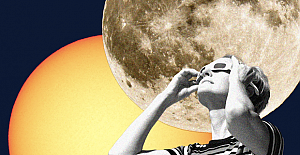 UK and US scientists have been working on eclipse observations
UK and US scientists have been working on eclipse observations Unsupportive goverment policies jeopardizing foundation of UK food security
Unsupportive goverment policies jeopardizing foundation of UK food security English Premier League leaders Arsenal will visit title contenders
English Premier League leaders Arsenal will visit title contenders Liverpool meet Atalanta and West Ham face Bayer Leverkusen
Liverpool meet Atalanta and West Ham face Bayer Leverkusen Arsenal face Bayern Munich and Manchester City play Real Madrid
Arsenal face Bayern Munich and Manchester City play Real Madrid UK Transfer deadline day, the transfer window closes tonight
UK Transfer deadline day, the transfer window closes tonight Europe's travel strikes: Flight and train disruption you can expect in April
Europe's travel strikes: Flight and train disruption you can expect in April Enfield Council website achieves digital inclusion recognition
Enfield Council website achieves digital inclusion recognition Enfield Council’s Planning Enforcement team goes from strength to strength
Enfield Council’s Planning Enforcement team goes from strength to strength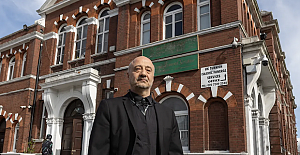 UK's first Turkish Shacklewell Lane Mosque faces threat to its future
UK's first Turkish Shacklewell Lane Mosque faces threat to its future


